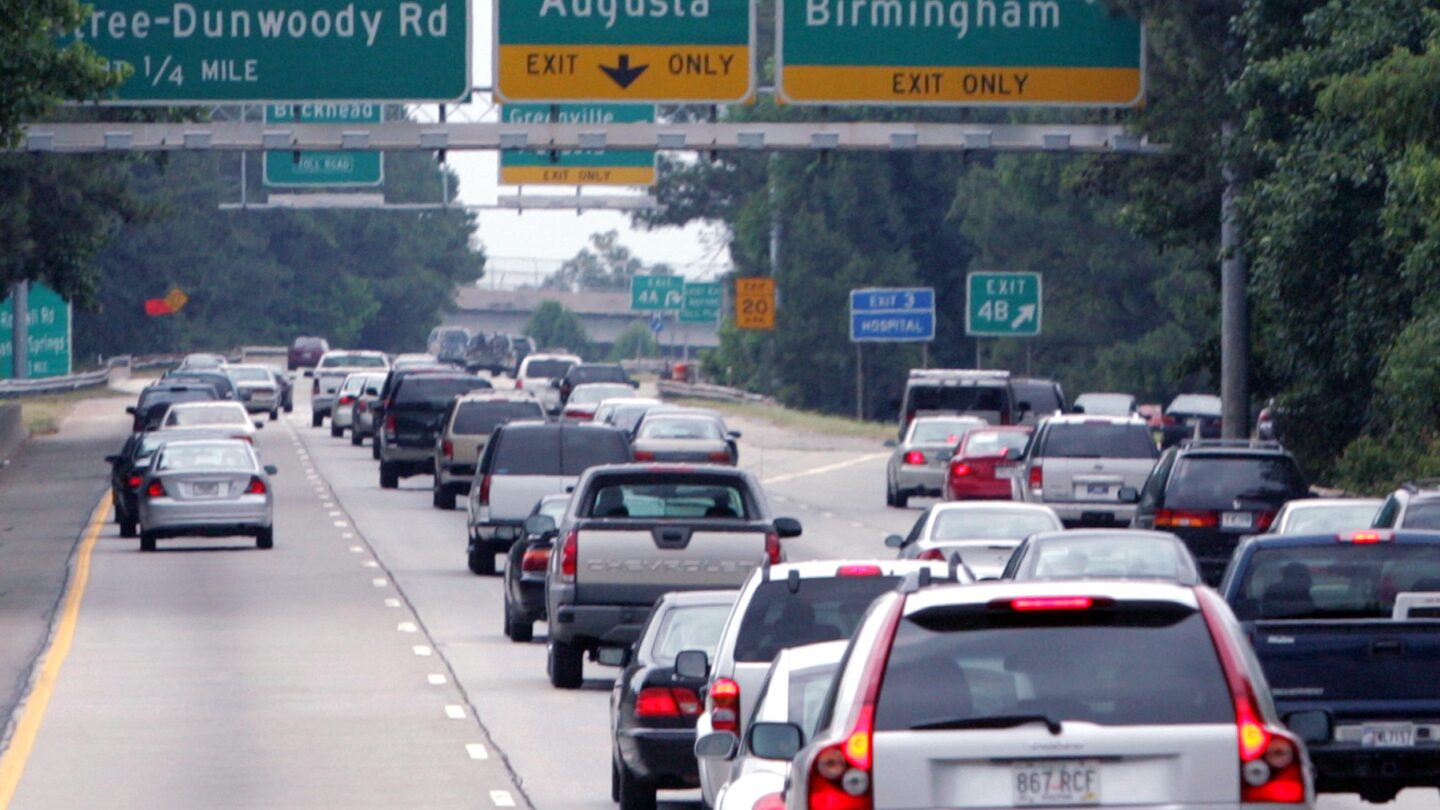Physical Inactivity: Unhealthy, And All Too Common In Georgia

In Atlanta, long commute times to work contribute to a lack of activity, said Jennifer Gay, an associate professor at the University of Georgia’s College of Public Health. Many of these drivers also have sedentary jobs, she said.
Pixabay Images
Not getting enough exercise? It’s not just you.
More than 1 in 4 Georgians report that they are physically inactive, among the highest rates in the country, the Centers for Disease Control and Prevention reports.
Physical inactivity for adults is defined as not participating in any leisure-time physical activities over the last month – such as running, walking for exercise, or gardening.
The 28.5 percent of Georgians reporting being physically inactive is in line with the average in the South, which had the highest prevalence among regions.
States and territories ranged from having 17.3 percent to 47.7 percent of people inactive, according to the CDC data released this week.
Physical activity can improve not only physical health but also mental well-being, Jennifer Gay, an associate professor at the University of Georgia’s College of Public Health, said Friday. And inactivity, she said, can increase the risks of health problems.
Separately, a survey of Atlantans shows that their biggest health concerns are their weight (mentioned by nearly half the respondents) and not getting enough exercise. The survey found that people in Atlanta are the least likely among those in 18 cities to exercise regularly, or more than three days per week.
The wellness survey was released by Healthline.com, the online health information site of Healthline Media. Atlanta came in at about the middle of the pack among the 18 cities on wellness, said Steve Swasey of Healthline.
Long Drive Times
The CDC report found that in seven states (Alabama, Arkansas, Kentucky, Louisiana, Mississippi, Oklahoma and Tennessee) and two territories (Puerto Rico and Guam), 30 percent or more of adults were physically inactive.
Primary barriers to exercise “are time and lack of access to places for physical activity,’’ Gay said.
In Atlanta, long commute times to work contribute to a lack of activity, Gay said. Many of these drivers also have sedentary jobs, she said.
“A major barrier is Georgia residents have less access to parks, community centers and maintained sidewalks,’’ Gay said.
States in the Southeast and a number of communities generally “do not prioritize the environmental supports that facilitate physical activity, or have the resources to do so,” she said.
To increase physical activity, a person doesn’t have to join a gym or purchase exercise equipment, Gay said. Taking the stairs, even doing household chores more briskly can help a person’s health.
For inactive people who want to change, “We recommend people start off slow,’’ Gay said. “You can find a few minutes here and a few minutes there to add physical activity into your life.’’
The CDC activity report is based on combined 2015-2018 data from the Behavioral Risk Factor Surveillance System, an ongoing state-based phone interview survey conducted by the CDC and state health departments.
“Too many adults are inactive, and they may not know how much it affects their health,” Dr. Ruth Petersen, director of the CDC’s Division of Nutrition, Physical Activity, and Obesity, said in a statement. “Being physically active helps you sleep better, feel better and reduce your risk of obesity, heart disease, type 2 diabetes, and some cancers.”
The data point to significant differences in physical inactivity levels by race and ethnicity. Overall, Hispanics had the highest prevalence of self-reported physical inactivity (31.7 percent), followed by non-Hispanic blacks (30.3 percent) and non-Hispanic whites (23.4 percent).
Inactivity contributes to 1 in 10 premature deaths in the United States. Inadequate levels of physical activity are associated with $117 billion in annual health care costs, the CDC said.
Andy Miller is editor and CEO of Georgia Health News





